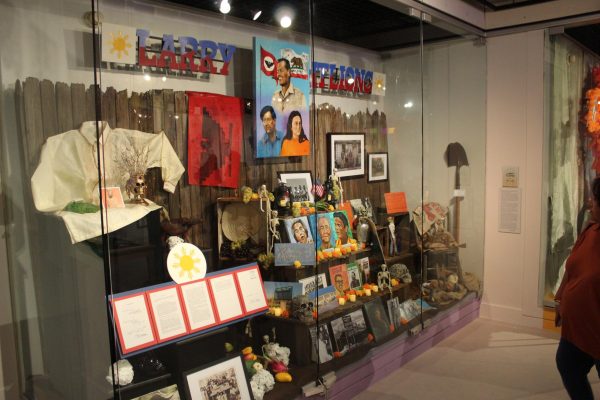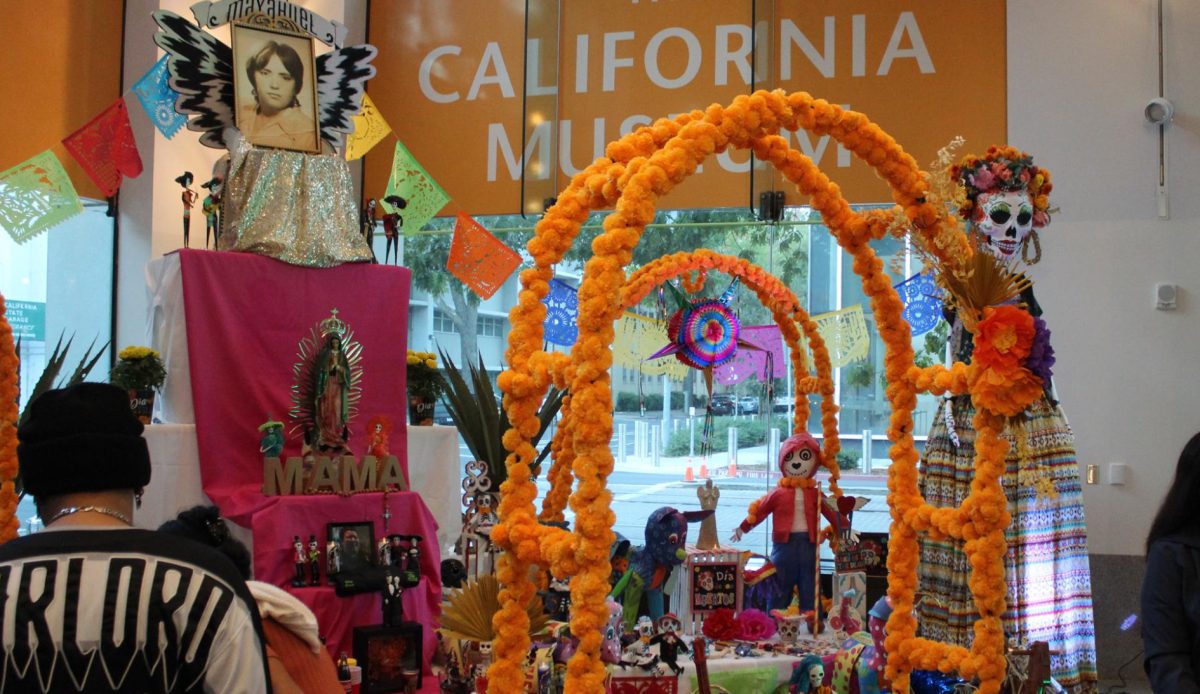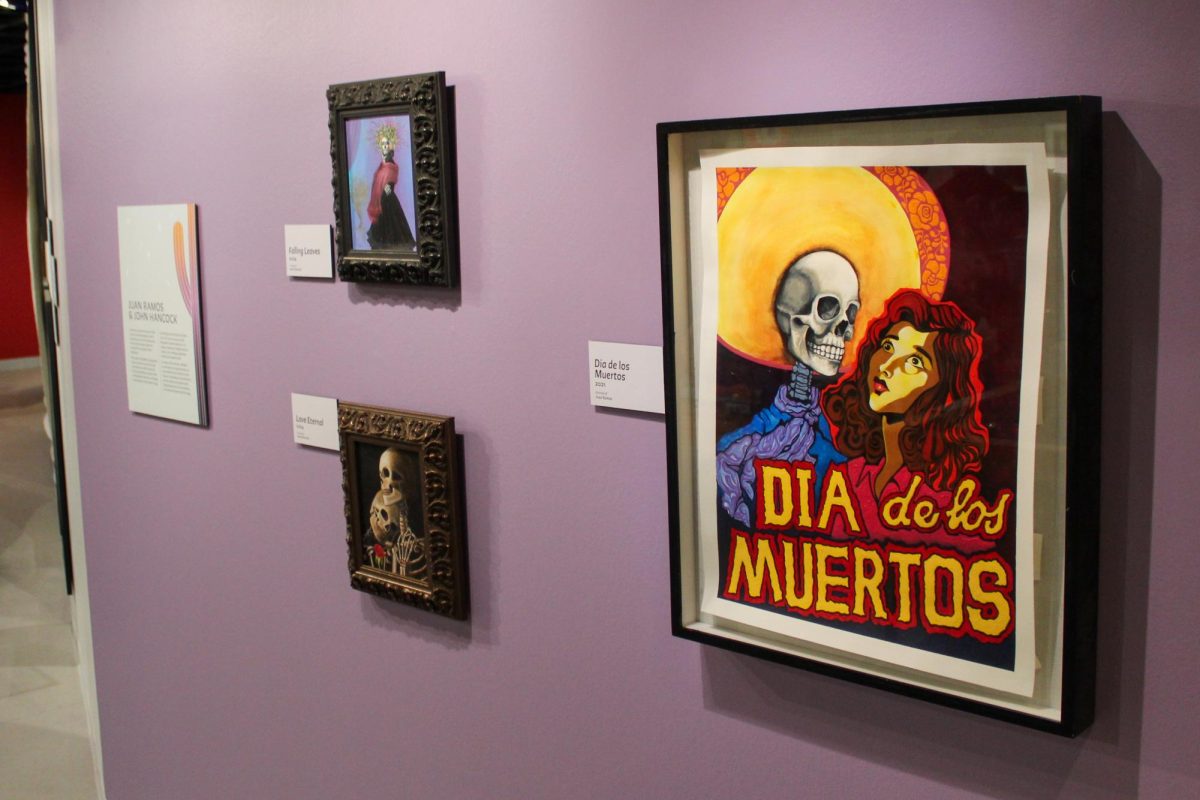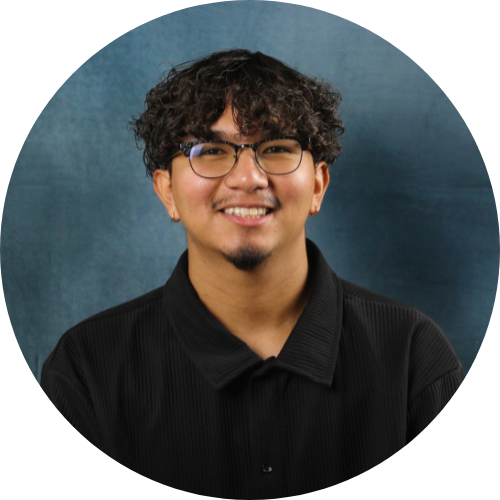At Sacramento’s California Museum, spectators relished in a cultural celebration of Mexican heritage on Saturday, Oct 12 during the museum’s opening of the “Art de Inspiracion: Día de Los Muertos 2024” exhibit, open to visitors until Nov 17.
The event highlighted a select variety of altars and artwork by artists Adrián Arias, Krisztianna, Juan Ramos and John Hancock.
John Hancock, whose altar was dedicated to Larry Itliong, said it was important to celebrate Dia de Los Muertos and what it meant to him.
Itliong, was a Filipino American labor organizer and is considered one of the founders of the West Coast labor movement. Itliong united with major figures like Cesar Chavez and Dolores Huerta in 1965 during the Delano grape strike.
“I love the concept of Día de Los Muertos because it celebrates the beauty of not just death but that life goes on,” Hancock said.
Throughout the unveiling of the exhibit, the California Museum hosted a variety of traditional Mexican performances in its courtyard, including performances from Macuilli Tonatiuh Aztec dancers, a Mayan band and Ballet Folklorico de Sacramento.
Ramos, the husband and co-artist of Hancock, said that each altar is meant to reflect the four elements earth, water, wind and fire.
“The fire in my mind is just Itliong,” Ramos said. “He was fiery because he just had to get things done.”

The main entrance to the museum hosted a grand altar, assembled by restaurateur Ernesto Delgado to honor his late mother who brought him to the United States from Mexico when he was 5 years old.
Delgado decorated the altar with skeletons, skulls, food, candles and marigold flowers that are typically used to commemorate loved ones. Each skeleton was dressed uniquely with its own outfit and belongings.
“It’s creating an offering to entice our past loved ones to visit during this time where there’s a spiritual opening where they can spend time with their loved ones,” Delgado said. “It’s a time for us to remember them as well, and for me, it’s also a celebration of culture.”
Delgado’s restaurant Tequila Museo Mayahuel partnered with the museum for the event to provide food, drinks and alcohol.
Delgado said he chose to bring mezcal rather than a more contemporary tequila because of its cultural relevance and historical connection.
“Tequila is a mezcal but mezcal was first,” Delgado said. “I like to say that when you sip and enjoy a mezcal, it’s almost spiritual.”
Arias dedicated his altar to René Yañez and Yolanda López, who were his friends and mentors.
Both Yañez and López made major contributions to the Chicanx art world and were involved in creating the artwork of the San Francisco Mission District that many have come to adore.
René Yañez, alongside Ralph Maradiaga, helped launch the United States’ first “Day of the Dead” altar exhibition in San Francisco in 1972.
RELATED: California Museum honors artists for Día de Los Muertos
Arias said he incorporated different elements of Dia de Los Muertos into his altar by adding personal belongings.
“In the case of René, I have access to his personal belongings, like the tortilla that he created for a group named the Great Tortilla Conspiracy,” Arias said. “They painted real tortillas with chocolate ink and gave it to the audience to eat.”
Arias said he approached López’s altar in a much different way than Yañez. Instead of using physical artifacts, he honored López in his paintings through brushwork, flowers and by incorporating her personal love for the ancestral hummingbird.
“Imagine that this is the cape of the Virgin of Guadalupe that she used,” Arias said. “But in this case, it’s Yolanda with her brushes, and it’s more like wings going to the afterlife.”
Guests can also bring items to leave on a community altar outside the exhibit entrance to commemorate loved ones that have passed.
According to the Smithsonian, the Monarch butterfly’s arrival coinciding with Día de Los Muertos represents the return of the souls of deceased relatives from the afterlife.
Arias said he used the metaphor of the Monarch butterfly to convey the impermanence of life.
“The life of the butterfly is a beautiful life, but it’s ephemeral,” Arias said. “It ends but it’s full of joy.”





































































































































